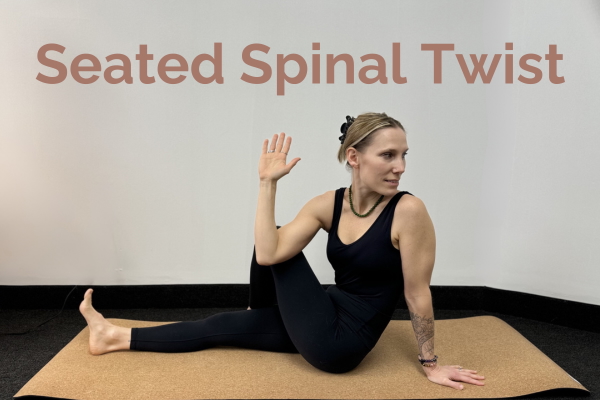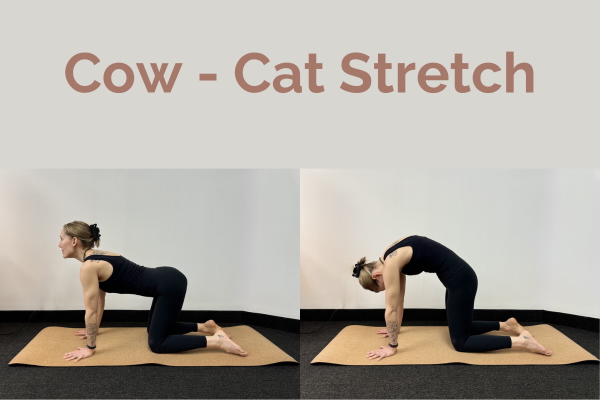5 Yoga Poses for Digestion
February 6, 2025
The ancient practice of yoga offers more than flexibility and mindfulness; it also provides tools to enhance digestion and support overall gastrointestinal health. Backed by scientific research, yoga can be an effective and holistic approach to improving digestive health for people of all ages. As a registered dietitian and certified yoga instructor, I often emphasize that optimal health stems from a well-functioning digestive system. Here we’ll dive into these 5 yoga poses for digestion that can enhance your overall digestive health.

How Yoga Supports Digestion
Yoga’s ability to improve digestive health lies in its mind-body connection. By combining gentle body movements with focused breathing, yoga helps regulate the gut-brain axis, reduce stress, enhance gastrointestinal motility, and promote a state of relaxation. These effects can:
- Restore balance to the digestive system by reducing anxiety and stress-related symptoms.
- Enhance sleep quality, which plays a key role in overall gut health. Research suggests that better sleep improves symptoms of constipation and other digestive concerns.
- Address the psychosocial roots of many digestive disorders, such as functional dyspepsia and IBS, by shifting the body from a stress-dominated state (sympathetic nervous system) to a relaxed state (parasympathetic nervous system).
This makes yoga an excellent evidence-based tool to naturally support healthy digestion.
4 Reasons How Yoga helps Digestion
- Improving Quality of Life: A randomized controlled trial by Ganesh et al. (2021) demonstrated that yoga therapy significantly improved digestive health and sleep quality in the elderly. This supports the notion that yoga’s benefits extend beyond physical health to emotional and mental well-being.
- Managing Functional Dyspepsia: Yoga therapy was shown to alleviate symptoms of functional dyspepsia or indigestion in a narrative review by Setia et al. (2023). Participants experienced reduced bloating, pain, and discomfort, likely due to yoga’s stress-reducing effects and its role in stimulating the parasympathetic nervous system.
- Alleviating IBS Symptoms: According to a systematic review by Schumann et al. (2016), yoga is effective in managing irritable bowel syndrome (IBS), reducing symptoms such as bloating, constipation, and diarrhea. It works by lowering cortisol levels and promoting relaxation, which can directly impact gut health.
- Enhancing Pediatric Digestive Health: Peropat et al. (2023) reviewed the use of yoga in pediatric gastroenterology, noting its role in improving digestion and alleviating symptoms like abdominal pain and IBS in children, which lead to a significant reduction in children’s school absence.
These findings highlight yoga’s potential as a complementary therapy for digestive health concerns for all ages!
Yoga incorporates gentle stretches, twists, and mindful breathing, all of which stimulate the digestive organs, increase blood flow to the gut, and enhance relaxation. Here are the 5 yoga poses for digestion.
5 Yoga Poses for Digestion
1. Seated Spinal Twist
- Benefits: Stimulates digestion, massages abdominal organs, and improves gut motility.
- How to Practice:
- Sit with your legs extended forward.
- Cross your right leg over your left thigh, placing your right foot flat on the floor.
- Place your right hand behind you and your left elbow on the outside of your right knee.
- Inhale to lengthen your spine, and exhale to twist to the right.
- Hold for 30 seconds, then switch sides.

2. Cat-Cow Stretch
- Benefits: Improves gut motility and relieves bloating and gas.
- How to Practice:
- Start on your hands and knees.
- Inhale as you drop your belly, lift your tailbone, and look up (Cow Pose).
- Exhale as you round your spine, tucking your chin to your chest (Cat Pose).
- Repeat for 1-2 minutes.

3. Child’s Pose
- Benefits: Encourages relaxation, reduces stress, and gently compresses the abdomen to stimulate digestion.
- How to Practice:
- Kneel on the floor, big toes touching, and sit back on your heels.
- Extend your arms forward and rest your forehead on the mat.
- Breathe deeply into your belly for 1-2 minutes.

4. Bridge Pose
- Benefits: Strengthens abdominal muscles and stimulates digestion by opening up the abdominal area.
- How to Practice:
- Lie on your back with your knees bent and feet hip-width apart.
- Press into your feet to lift your hips toward the ceiling.
- Hold for 30 seconds to 1 minute, then slowly lower.

5. Wind-Relieving Pose
Benefits: Relieves gas and bloating, stimulates peristalsis.
How to Practice:
Lie on your back, bend knees and hug both knees to your chest. Hold for 30 seconds, gently rocking side to side.

Yoga offers a gentle yet transformative way to nurture your digestive health. Whether you’re managing a chronic condition or simply aiming to enhance gut function, yoga combines physical movement and mindful breathing to support both body and mind. Rooted in centuries of tradition and supported by modern research, yoga seamlessly integrates holistic practices with scientific insights.
Research highlights the effectiveness of both video and in-person yoga classes in reducing stress and improving the quality of life for individuals with gastrointestinal disorders. Start by trying a few simple poses and breathing techniques, then gradually expand your practice. Consider booking a private yoga session with me to learn more personalized techniques that strengthen the brain-gut connection and optimize your digestive health.
Note: The yoga poses shared are a starting point and everyone’s body is unique! Consult your healthcare provider or schedule a session with me to tailor your practice to your needs. As a registered dietitian and certified yoga instructor, I’m here to guide you toward a healthier, more balanced digestive system. Consistency, mindfulness, and listening to your body are the keys to unlocking yoga’s full potential for your health. Namaste!
For more nutrition and wellness tips and to stay in touch with the offerings happening at Peaceable Nutrition & Wellness follow along on Instagram and join the email list.
For references to this blog post, you can find them here.
This blog post was written in collaboration with dietetic intern Trisha Donovan.